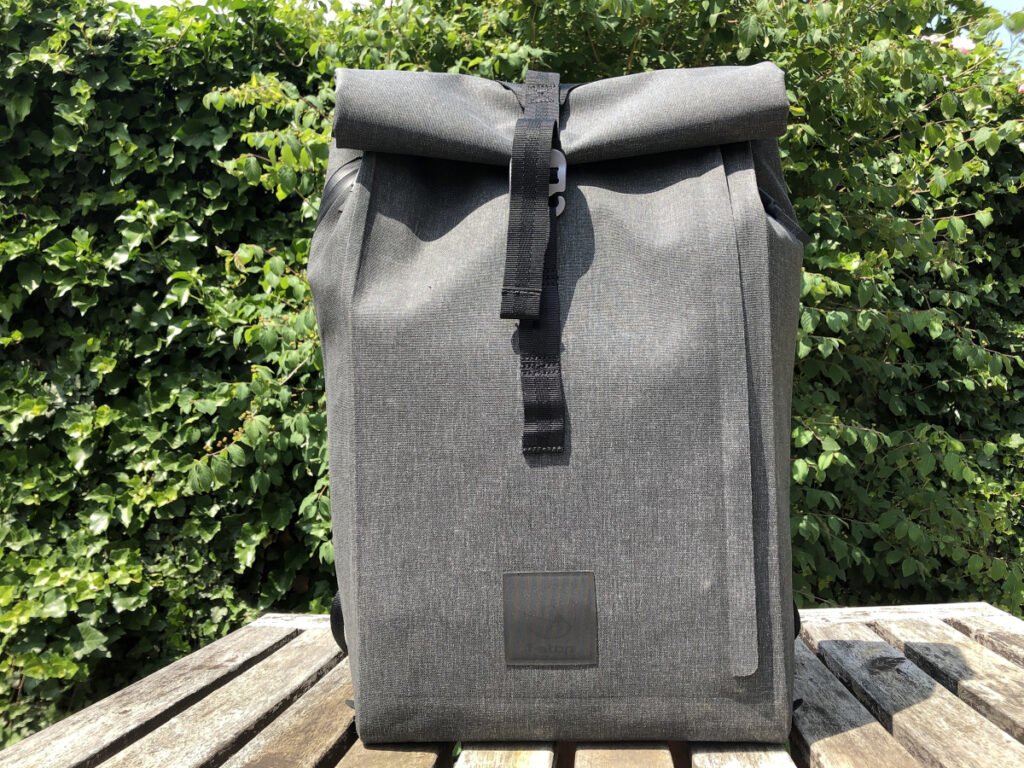No matter what type of photography you shoot, the best standard zoom lenses give you a real leg up. But what do you need to look for in a standard zoom lens? You need sharp and clear optical quality. A responsive AF motor is always important. And a fast max aperture opens up lots of shooting opportunities.
The Canon RF 24-70mm f/2.8L IS USM is the best standard zoom lens right now. The optical quality is sensational. It uses Canon’s superior USM motor. And it has a fast f/2.8 maximum aperture. You also have optical stabilization for even more exposure control.
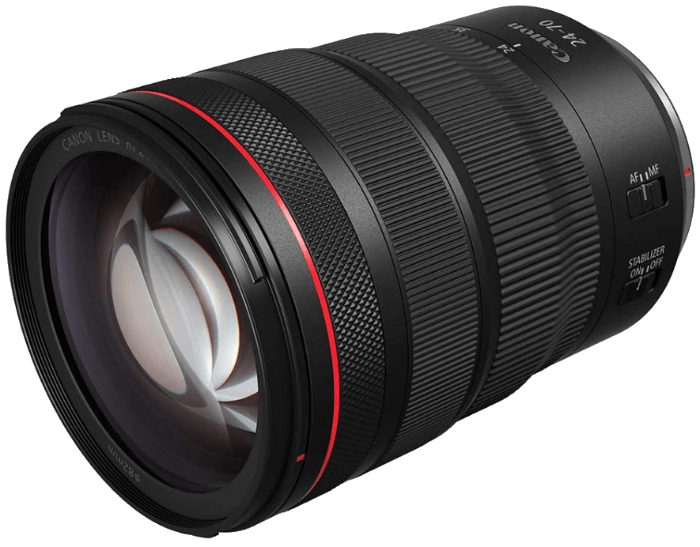
What Is the Best Standard Zoom Lens?
The best standard zoom lens has a standard-angle zoom range. That means it has a focal length that gives you a standard angle of view, as opposed to a telephoto or wide-angle view.
A standard focal length is anything between 35 and 70mm. Some of the lenses on our list stray outside the 35 or 70mm limit, either at one end or the other. But the majority of their focal range is within the standard focal length range.
The aperture range is always important when buying a new lens. Apertures from f/1.2 to f/2.8 are considered fast. They give you the best control over exposure settings and depth of field. Slower max apertures are acceptable too. And some lenses have optical stabilization to help compensate for slower maximum aperture settings.
You also have to remember the basics. Any new lens you buy has to be compatible with your camera. We’ve divided the list into mirrorless and DSLR lenses to help you find what you need. And you have to keep your budget in mind. We have expensive pro lenses and more affordable options.
We also have an FAQ section at the end with more information on standard zoom lenses. That’s the place to go if you want to learn more before your buy anything.
Use the links below to navigate through the article.
- Best Standard Zoom Lenses for Mirrorless Cameras
- Best Standard Zoom Lenses for DSLR Cameras
- FAQs on the Best Standard Zoom Lenses
Best Standard Zoom Lenses for Mirrorless Cameras
This section looks at the best standard zoom lenses for mirrorless cameras. We have RF lenses for Canon’s mirrorless camera range. And we have Z-mount lenses for Nikon mirrorless cameras. We also have lenses for Sony, Fujifilm, and Olympus cameras.

- Offers a bright f/2.8 aperture for high image quality
- Optical image stabilization with up to 5 stops of compensation
- Smooth, quiet autofocus with Nano USM technology
- Includes a control ring for direct setting changes
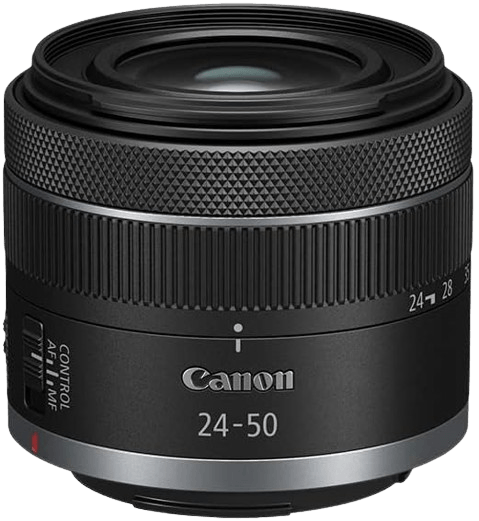
- Built-in optical image stabilization
- Custom control ring on barrel
- Silent focusing with no focus breathing
- Super Spectra Coating (SSC) reduces lens flare
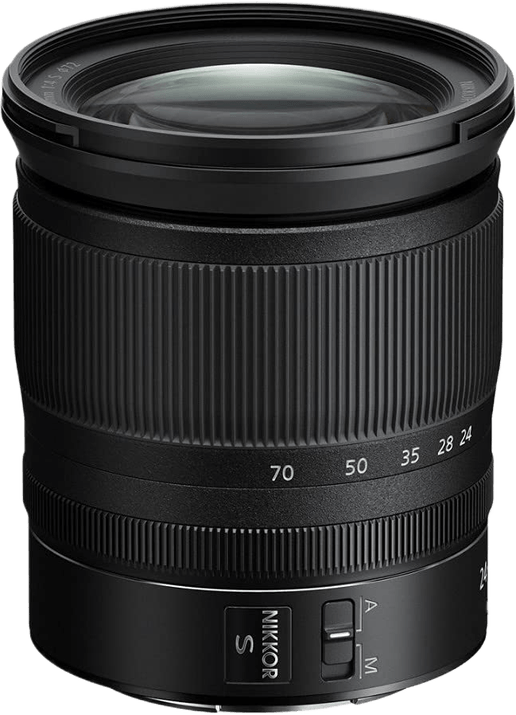
- Prized 24-70mm range ensures versatility
- Remarkable sharpness and distortion control
- Constant f/4 aperture for consistent exposure
- Smooth, silent focusing is ideal for video
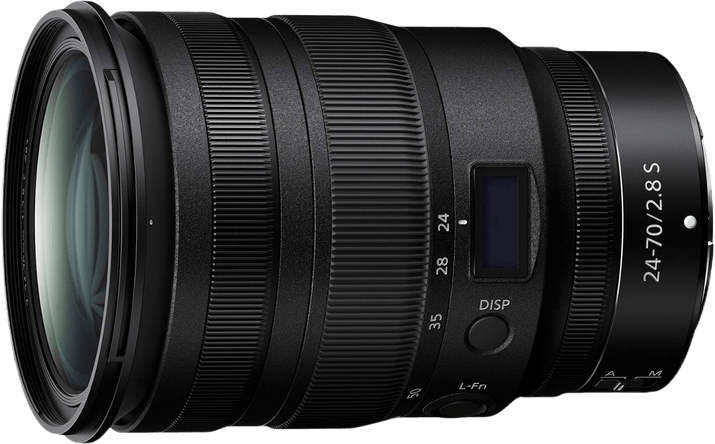
- Versatile mid-range zoom for various applications
- Unbeatable clarity, resolution, and natural bokeh
- Features Multi-Focus System for fast, accurate autofocusing
- Extensively sealed for dust- and moisture-resistance
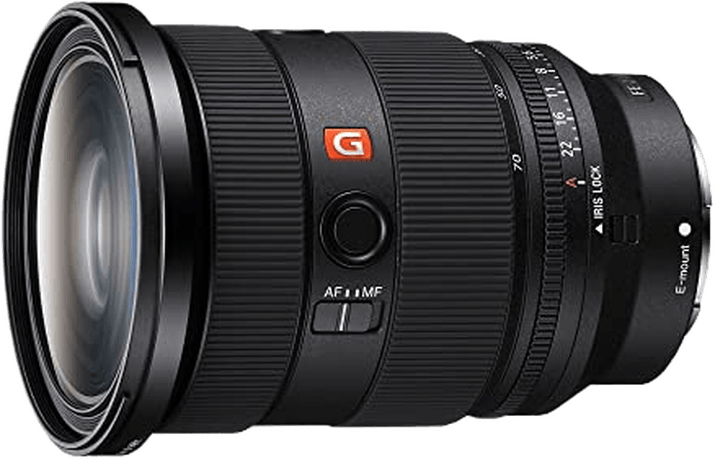
- Unmatched G Master resolution and bokeh
- Lightweight with superior mobility for versatile use
- Fast, precise, and quiet autofocus with excellent tracking
- Fast f/2.8 aperture for excellent exposure control
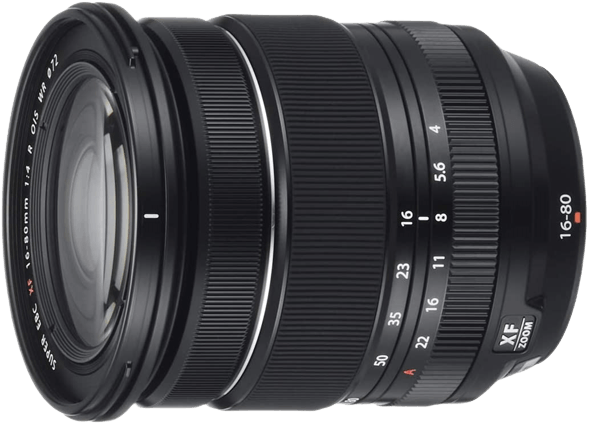
- Ultra-lightweight for all-day shooting comfort
- Versatile focal range for diverse photography styles
- Advanced Optical Image Stabilization for sharp images
- Weather-resistant design for reliable outdoor use
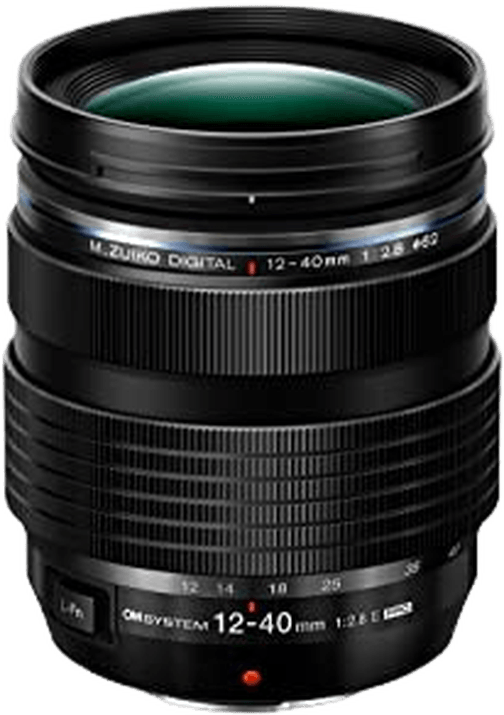
- Bright, fast lens for exceptional image quality
- Compact and lightweight for on-the-go shots
- Weather-sealed design for all conditions
- Fluorine coating for enhanced clarity
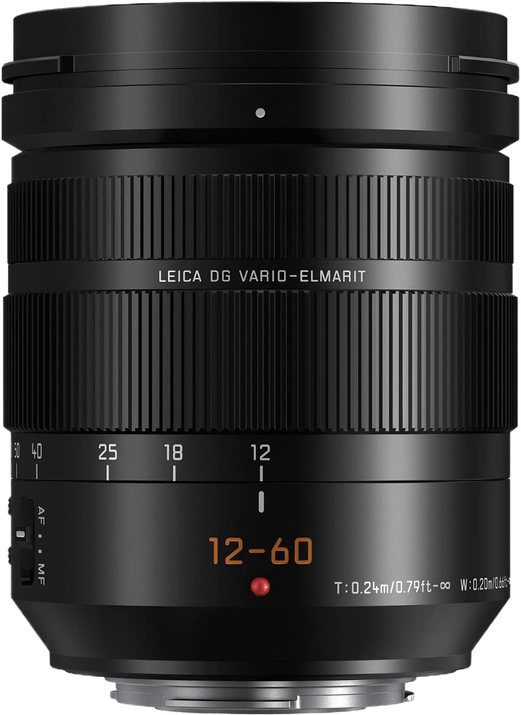
- Unmatched optical performance with Nano Surface Coating
- Advanced image stabilization for sharp, blur-free photos
- Flexible framing with 24 to 120mm focal length
- Durable, weather-resistant design for any shooting location
1. Canon RF 24-70mm f/2.8L IS USM

| Brand |
Brand
Canon
|
| Maximum Aperture |
Maximum Aperture
f/ 2.8
|
| Focal Length Range |
Focal Length Range
24-70 mm
|
| Image Stabilization |
Image Stabilization
|
| Other Key Features |
Other Key Features
Optical stabilization, custom control ring, 12-pin coms system, three aspherical and three UD elements
|
| Best For |
Best For
Canon mirrorless users looking for a pro-level lens with a fast aperture
|
For Canon users, the Canon RF 24-70mm f/2.8L IS USM has to be in contention for the best standard zoom lens on the market. It has sensational optical quality accompanied by Canon’s most advanced lens features. It isn’t cheap. But it’s well worth the price if you want pro results.
The focal range covers the entire standard-angle range, with a little bit extra on the wide side. That makes it a versatile zoom range you can use for many types of photography. You can use it for high-quality street, portrait, and landscape photography.
With Canon’s best glass design and engineering, the optical quality rivals many pro-grade prime lenses. The barrel includes three aspherical and three Ultra-low Dispersion (UD) elements. These eliminate chromatic aberration. And it has an Air Sphere Coating (ASC) that reduces lens flare.
You get excellent low-light performance with the f/2.8 maximum aperture. It also allows you to use a shallow depth of field, which is great for portrait, product, and food photography.
As well as a fast aperture, you also have image stabilization for even more exposure control. It allows you to use slower shutter speeds with less risk of camera shake. And when paired with a camera that has built-in stabilization, you can work in any lighting conditions.
Photographers who prefer manual controls will appreciate the custom control ring. You can apply other settings to it, such as ISO, shutter speed, aperture, or exposure compensation.
The Canon RF 24-70mm f/2.8L IS USM is a rugged lens with full weather sealing. And the outer elements have a fluorine coating that protects against dirt, scratches, and smudges. The build quality is fantastic inside and out.
If you’re a Canon user, our full article on the best standard zoom lenses for Canon is a must-read.
2. Canon RF 24-50mm f/4.5-6.3 IS STM

| Brand |
Brand
Canon
|
| Lens Mount |
Lens Mount
Canon RF
|
| Maximum Aperture |
Maximum Aperture
f/ 6.3
|
| Focal Length Range |
Focal Length Range
24-50 mm
|
| Image Stabilization |
Image Stabilization
|
| Other Key Features |
Other Key Features
Image stabilization, SS Coating, custom control ring
|
| Best For |
Best For
Canon users looking for an affordable standard zoom lens
|
The Canon RF 24-50mm f/4.5-6.3 IS STM is a more affordable zoom option for Canon users. It doesn’t match up to the previous Canon lens. But it’s a fantastic standard zoom lens for a wide range of photography styles.
The focal range goes from a 24mm wide angle to a standard 50mm angle. That makes it a popular option for street photographers. You can shoot wide-open shots as well as tighter detailed images.
It doesn’t have the best aperture range. It’s limited to f/4.5 at the wide end, which is reduced to f/6.3 when you zoom in. Thankfully, the lens has built-in optical stabilization to help compensate. That means you still get excellent exposure control and good low-light performance.
The lens uses Canon’s older STM autofocus system. It still gives you fast and reliable focusing. And it’s quiet with no focus breathing, making it an excellent lens for video. It’s a popular lens for vloggers.
Despite the affordable price tag, the optical quality of the Canon RF 24-50mm f/4.5-6.3 IS STM is still fantastic. The two aspherical lenses reduce distortion and aberration. And the glass elements have Canon’s Super Spectra Coating (SSC) that prevents flare and ghosting.
3. Nikon Z 24-70mm f/4 S

| Brand |
Brand
Nikon
|
| Maximum Aperture |
Maximum Aperture
f/ 4.0
|
| Focal Length Range |
Focal Length Range
24-70 mm
|
| Image Stabilization |
Image Stabilization
|
| Other Key Features |
Other Key Features
Optical VR, custom control ring, silent AF motor
|
| Best For |
Best For
Photographers and videographers with a Nikon mirrorless camera
|
The Nikon Z 24-70mm f/4 S is a top-quality lens for photography and videography. It has a versatile zoom range that spans the entire standard focal length range. And it’s optimized for video recording, making it perfect for filmmakers and vloggers.
With an f/4 maximum aperture, the exposure control isn’t bad. And it’s consistent throughout the zoom range. But if you do need more light, the lens has Nikon’s dual-detect optical Vibration Reduction (VR). This gives you more options with your exposure settings in low-light situations.
Driven by the silent stepping motor, the lens has a reliable AF system. And the fact it’s silent is ideal for shooting video. It also has minimal focus breathing, allowing you to adjust the focus during shots.
The custom control ring is another handy feature. You can assign it settings like ISO, aperture, or shutter speed, giving you a more hands-on experience. It also makes it quicker and easier to adjust the settings. You don’t need to use the camera interface and menus.
The Nikon Z 24-70mm f/4 S is protected from dust and moisture, so you can use it outdoors in tough conditions. And the outer elements have a fluorine coating to protect against scratches and smudges. It’s a high-quality and versatile lens at an excellent price.
Nikon users should also check out our full list of the best standard zoom lenses for Nikon cameras. We also have more of the best 24-70mm Nikon lenses in this article.
4. Nikon Z 24-70mm f/2.8 S

| Brand |
Brand
Nikon
|
| Maximum Aperture |
Maximum Aperture
f/ 2.8
|
| Focal Length Range |
Focal Length Range
24-70 mm
|
| Image Stabilization |
Image Stabilization
|
| Other Key Features |
Other Key Features
STM AF system, four aspherical elements, two ED elements, custom control ring, custom function button
|
| Best For |
Best For
Nikon users looking for pro-grade photography zoom lens
|
The Nikon Z 24-70mm f/2.8 S is a classy piece of equipment for serious photographers. With stunning optics and Nikon’s latest lens features, it earns its price tag.
The image quality you get from this lens is incredible. The barrel has a total of 17 elements arranged in 15 groups. And of those 17, there are four aspherical and two Extra-low Dispersion (ED) elements. That means you get zero lens distortion, even at the edges.
Using the silent stepping motor, the AF is fast and quiet. But the lens has a new multi-focusing system, taking the AF to the next level. It uses two drive motors working in sync, giving you lightning-quick AF reaction times.
Every photographer will appreciate the superfast f/2.8 max aperture. It gives you incredible exposure control and allows you to create a fabulous bokeh effect. And it’s constant throughout the zoom range. That means you get excellent low-light performance anywhere from 24 to 70mm.
Thanks to the custom control ring and button, you can change settings faster than ever. You don’t need to return to your camera menu to change the settings. You can assign them to the ring or button and make the changes manually.
The Nikon Z 24-70mm f/2.8 S is also dust- and splash-resistant, making it a great option for outdoor photography. It’s a superb lens. And one of Nikon’s best Z lenses in any category. If you’re a Nikon-using pro, you need this lens in your camera backpack.
5. Sony FE 24-70mm f/2.8 GM II

| Brand |
Brand
Sony
|
| Maximum Aperture |
Maximum Aperture
f/ 2.8
|
| Focal Length Range |
Focal Length Range
24-70 mm
|
| Image Stabilization |
Image Stabilization
|
| Other Key Features |
Other Key Features
Two AX elements, two Super ED elements, floating focus mechanism, XD AF motor, manual aperture ring
|
| Best For |
Best For
Sony users looking for a pro-grade standard zoom lens
|
Sony users need to take notice of the Sony FE 24-70mm f/2.8 GM II. It’s Sony’s best standard zoom lens, with a fast aperture, rapid AF system, and stunning optical quality. It’s the perfect match for Sony’s high-resolution mirrorless cameras.
The optical technology is very impressive. There are two Extreme Aspherical (XA), two Extra-low Dispersion (ED), and two Super ED elements. When combined, they give you crystal-clear optics. You won’t find a trace of distortion at any point in the zoom range.
You also get the fast f/2.8 aperture, which is constant at any focal length. You don’t lose any aperture stops when zooming in. You also have the manual aperture ring on the barrel if you prefer the old-school style of shooting.
Sony cameras have excellent AF systems. And this lens has no problem supporting such advanced systems. It uses an Extreme Dynamic (XD) linear motor, which is fast and quiet. It also uses a floating focus mechanism to help reduce noise. And it also prevents focus breathing, making this a great Sony lens for videographers.
Sony’s G-series has some fantastic lenses. But the Sony FE 24-70mm f/2.8 GM II is the best choice in the standard zoom division. It’s simply stunning and well worth the price.
For more Sony options, see our list of the best standard zoom lenses for Sony.
6. Fujifilm XF 16-80mm f/4 R OIS WR

| Brand |
Brand
Fujifilm
|
| Maximum Aperture |
Maximum Aperture
f/ 4.0
|
| Focal Length Range |
Focal Length Range
16-80 mm
|
| Image Stabilization |
Image Stabilization
|
| Other Key Features |
Other Key Features
Optical stabilization, aspherical lens, weather-resistant
|
| Best For |
Best For
Fujifilm users looking for a versatile, rugged zoom lens
|
The Fujifilm XF 16-80mm f/4 R OIS WR is the best standard zoom lens for Fujifilm users. It has a wide, versatile zoom range you can use for anything from landscapes to portraits. It has clear optics and a fast AF motor. And it’s weather-resistant for outdoor use.
The f/4 max aperture isn’t the fastest. But it is constant throughout the zoom range, so you don’t lose any low-light performance when zooming in. Also, the lens compensates with built-in optical stabilization. This gives you up to six stops of exposure compensation.
With a fast and smooth AF motor, the lens is optimized for the autofocus systems of Fujifilm’s X-series cameras. And the fact it’s pretty much silent in operation is another positive. That makes it a good option for shooting video.
7. Olympus ED 12-40mm f/2.8 PRO II

| Brand |
Brand
Olympus
|
| Maximum Aperture |
Maximum Aperture
f/ 2.8
|
| Focal Length Range |
Focal Length Range
12-40 mm
|
| Image Stabilization |
Image Stabilization
|
| Other Key Features |
Other Key Features
Weather-sealed, fluorine coating, manual focus clutch, custom function button
|
| Best For |
Best For
Anyone with a Micro Four Thirds camera
|
The Olympus ED 12-40mm f/2.8 PRO II is the best standard zoom lens from Olympus. It’s a sharp lens that gives you clear picture quality. It has handy features any photographer will appreciate. And it’s versatile and weather-sealed for any shooting scenario.
At first glance of the focal length, you might think with is a wide-angle zoom. But due to the crop factor when using Micro Four Thirds (MFT) cameras, the 12-40mm focal length is equivalent to 24-80mm on a full frame camera. That effectively makes it a standard zoom lens.
The bright f/2.8 aperture is another big positive. It gives you wonderful control over your exposure settings. You can achieve a lovely shallow depth of field. And it’s constant throughout the zoom range.
There’s a custom function button on the side of the lens barrel. You can assign any setting to this button, making it easy to adjust while shooting. The lens also has a manual focus clutch that allows you to take control whenever you need to.
One benefit of using Micro Four Thirds cameras is that the lenses are interchangeable. That means you can use Olympus lenses with Panasonic MFT cameras and vice versa. That means the Olympus ED 12-40mm f/2.8 PRO II is compatible with your Panasonic camera.
You can also see our full list of the best Micro Four Thirds lenses.
8. Panasonic Lumix G 12-60mm f/2.8-4.0 OIS

| Brand |
Brand
Panasonic LUMIX
|
| Maximum Aperture |
Maximum Aperture
f/ 2.8-4
|
| Focal Length Range |
Focal Length Range
12-60 mm
|
| Image Stabilization |
Image Stabilization
|
| Other Key Features |
Other Key Features
Nano Surface Coating, image stabilization, dustproof and splashproof
|
| Best For |
Best For
Photographers and videographers with a Panasonic MFT camera
|
The Panasonic Lumix G 12-60mm f/2.8-4.0 OIS is a beautiful lens from Panasonic Lumix. It has been developed and produced in partnership with Leica, so there’s no question about quality. But it’s also optimized for video. And it’s dustproof, splashproof, and freezeproof.
As an MFT lens, the listed focal length is slightly misleading. It actually gives you a focal range equivalent to 24-120mm on a full frame camera. That means you get a lovely wide angle at one end and telephoto magnification at the other. That’s why it’s such a versatile lens.
You get a fast f/2.8 aperture when shooting at the wide-angle end. But this is reduced to f/4 when you zoom in fully. Thankfully, you can use the built-in optical stabilization to compensate.
The picture quality is excellent at all points in the focal range. And the glass has a nano surface coating that reduces flare and ghosting.
Videographers will love the AF system. Not only is it fast and silent in operation, it can also deal with frame rates up to 240 fps. That means you get full focus support when shooting super-slow-motion videos.
The Panasonic Lumix G 12-60mm f/2.8-4.0 OIS is a rugged lens. And just like the Olympus lens above, it’s compatible with all Micro Four Thirds models, not just Panasonic cameras.
Best Standard Zoom Lenses for DSLR Cameras
Now we’ll look at the best standard zoom lenses for DSLR cameras. Nikon and Canon are the two main manufacturers in the DSLR market. But we also have options from Sigma and Pentax.
DSLRs might be on the way out, but many photographers still love them. And if you’re one of those photographers, this is the place to find the best standard zoom lens for your DSLR camera.
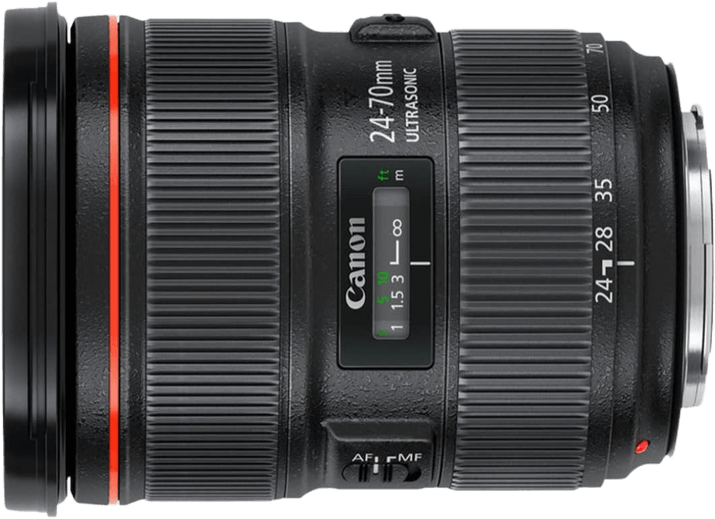
- Redesigned for superior image quality
- Large aperture for shallow depth of field
- Robust construction for professional use
- Free damage protection for 13 months
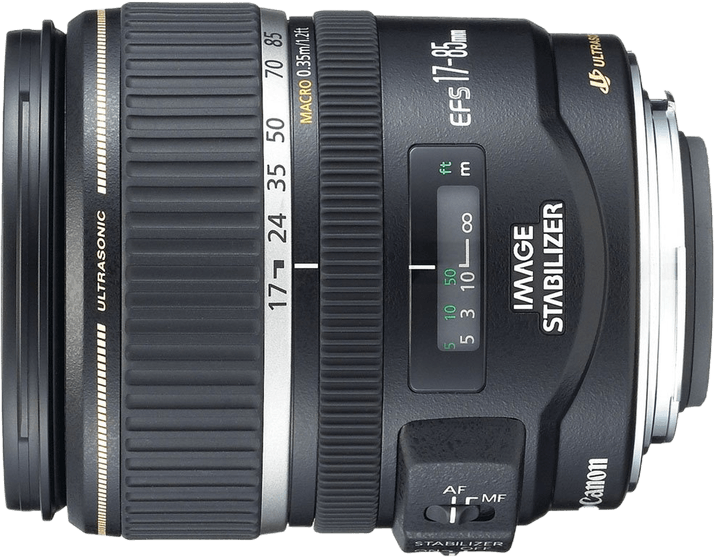
- Wide-angle to tele coverage perfect for Canon Rebel range
- Image Stabilization allows safe hand-holding at slower shutter speeds
- Fast, silent AF and full-time manual focus with ring-type USM
- Superior optical quality with a compact, lightweight design
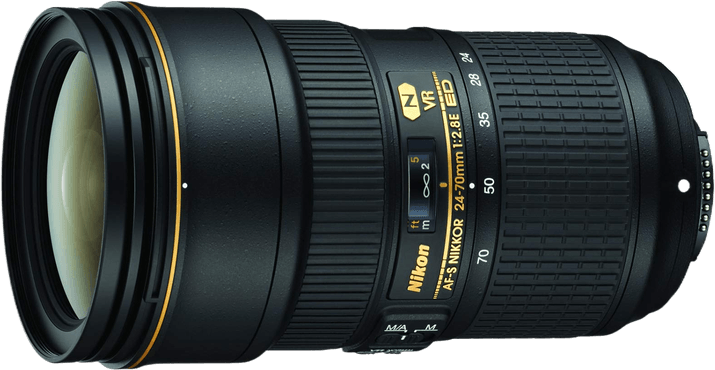
- Fast f/2.8 constant aperture for brilliant low-light performance
- Superior image quality with virtually no distortion
- 4 stops of vibration reduction for steady shots
- Evolution of Nikon's legendary 24-70mm workhorse lens
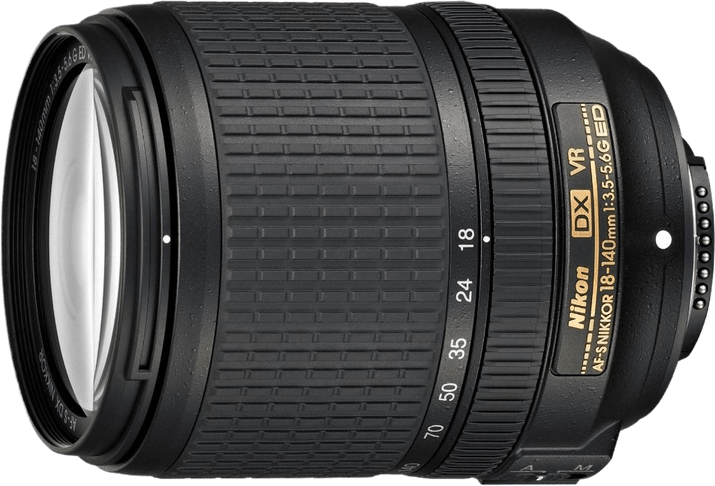
- Versatile 7.8x zoom range for varied shots
- 4 stops of VR image stabilization for crisp, clear photos
- Ultra-fast, ultra-quiet autofocusing with Nikon's Silent Wave Motor
- ED glass and aspherical lens element for superior image quality
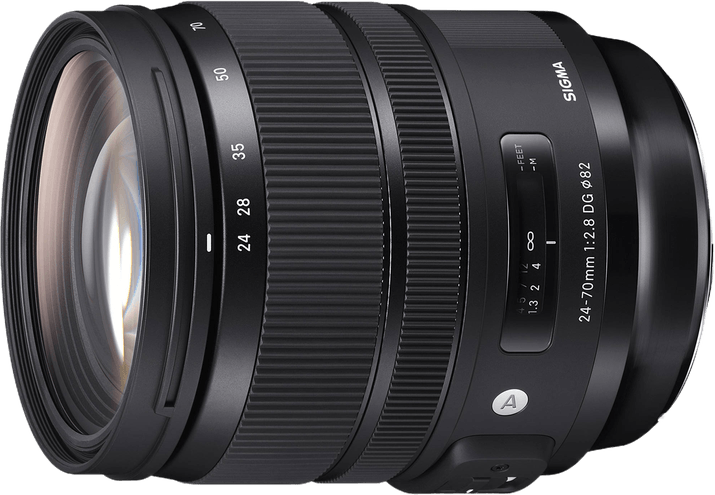
- Superior image quality meets digital demands
- Fast f/2.8 gives you depth of field control anywhere in the zoom range
- Ultrasonic AF motor enables fast and accurate focusing
- Purchase includes 13 months of free damage protection
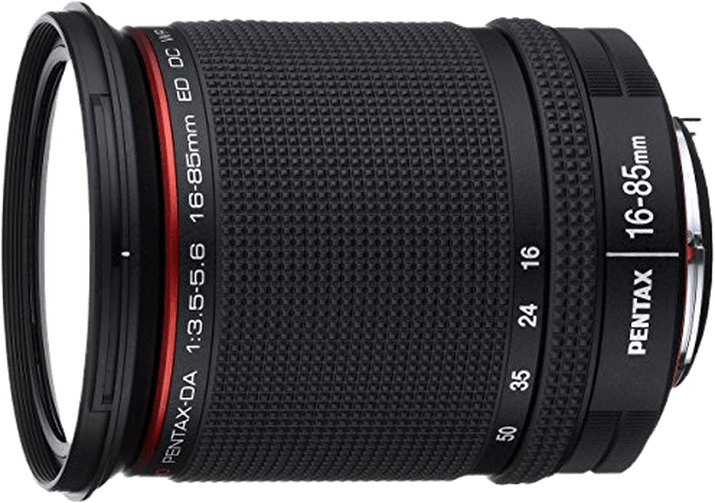
- Fully weather resistant for outdoor use
- ED glass elements reduce distortion
- High-definition lens coating minimizes flare and ghosting
- Wide focal length range for shot variety
1. Canon EF 24-70mm f/2.8L II USM

| Brand |
Brand
Canon
|
| Lens Mount |
Lens Mount
Canon EF
|
| Maximum Aperture |
Maximum Aperture
f/ 2.8
|
| Focal Length Range |
Focal Length Range
24-70 mm
|
| Image Stabilization |
Image Stabilization
|
| Other Key Features |
Other Key Features
Two UD and one Super ED element, two aspherical elements, nine-blade aperture
|
| Best For |
Best For
Photographers with a full frame Canon DSLR
|
The Canon EF 24-70mm f/2.8L II USM is the best standard zoom lens for Canon DSLR cameras. The optical quality is sensational. It has a fast maximum aperture. And it’s rugged for outdoor use.
The optical quality comes from the advanced glass technology within. It has one Super Ultra-low Dispersion (Super-UD) element as well as two Ultra-low Dispersion (UD) elements. And there are two aspherical glass elements. These all work together to minimize distortion, giving you super-sharp images.
With a superfast f/2.8 constant max aperture, you get incredible depth of field control. And thanks to the nine-blade rounded aperture diaphragm, you get smooth, creamy bokeh backgrounds.
You also get Canon’s superior USM autofocus system. It’s an ultra-sonic motor, which is fast, smooth, and silent.
The Canon EF 24-70mm f/2.8L II USM is tough enough for outdoor photography. It’s dustproof and weather-sealed. And the outer glass elements have a fluorine coating that protects against dirt, scratches, and smudges.
We have more of the best 24-70mm lenses for Canon in this link.
2. Canon EF-S 17-85mm f/4-5.6 IS USM

| Brand |
Brand
Canon
|
| Lens Mount |
Lens Mount
Canon EF-S
|
| Maximum Aperture |
Maximum Aperture
f/ 5.6
|
| Focal Length Range |
Focal Length Range
17-85 mm
|
| Image Stabilization |
Image Stabilization
|
| Other Key Features |
Other Key Features
Image stabilization, aspherical element
|
| Best For |
Best For
Canon users looking for an affordable standard zoom lens
|
The Canon EF-S 17-85mm f/4-5.6 IS USM is an absolute bargain. And the low price is surprising considering its features. It has a wide zoom range, making it a versatile option. And it has crisp optical quality. There’s no reason you can’t slip it into your roll-top backpack.
The lens’ aspherical element gives you aberration-free images. And the lens uses Canon’s USM AF system for faster, smoother, and quieter focusing.
You don’t have the best aperture range with this lens. Your widest option at the wide-angle end is just f/4. And when you zoom in, you lose another stop. Thankfully, you have the image stabilization system to give you more exposure control in low-light conditions.
Despite including 17 glass elements, the lens is compact and lightweight. Combined with the versatile zoom range, its light weight and small size makes it one of the best lenses for travel. And the front element doesn’t rotate, so you can use accessories like variable ND filters.
3. Nikon AF-S FX 24-70mm f/2.8 ED VR

| Brand |
Brand
Nikon
|
| Lens Mount |
Lens Mount
Nikon F
|
| Maximum Aperture |
Maximum Aperture
f/ 2.8
|
| Focal Length Range |
Focal Length Range
24-70 mm
|
| Image Stabilization |
Image Stabilization
|
| Other Key Features |
Other Key Features
Vibration reduction, aspherical and UD elements
|
| Best For |
Best For
Full frame Nikon DSLR users
|
The Nikon AF-S FX 24-70mm f/2.8 ED VR has been around for a while. But it remains one of Nikon’s best standard zoom lenses. It’s a demonstration that class never goes out of fashion. And it’s the perfect partner for your full frame Nikon DSLR camera.
To improve image quality, Nikon has used a unique Aspherical Extra-low Dispersion (ASP/ED) element. And when paired with other aspherical and UD elements, you’re guaranteed distortion-free images.
With a fast f/2.8 aperture, you get excellent exposure and depth of field control. And to make it even better, the f/2.8 is constant throughout the focal length range. That means you can achieve a deep bokeh effect even at the telephoto end.
And with Nikon’s Vibration Reduction system built-in, you get even more control over your exposure settings. It helps you achieve sharper images in tougher lighting conditions. The lens also has a rapid autofocus motor. It’s not quite silent, but it’s still whisper-quiet.
See more of the best Nikon F-mount lenses in this article.
4. Nikon AF-S DX 18-140mm f/3.5-5.6 ED VR

| Brand |
Brand
Nikon
|
| Lens Mount |
Lens Mount
Nikon F
|
| Maximum Aperture |
Maximum Aperture
f/ 5.6
|
| Focal Length Range |
Focal Length Range
18-140 mm
|
| Image Stabilization |
Image Stabilization
|
| Other Key Features |
Other Key Features
ED element, aspherical element, Super Integrated Coating
|
| Best For |
Best For
APS-C Nikon DSLR cameras
|
If you’re using an APS-C Nikon, you need the Nikon AF-S DX 18-140mm f/3.5-5.6 ED VR in your camera bag. It has a wide zoom range for versatility. And it has great optical quality and built-in stabilization.
The zoom range allows you to shoot anything from wide-angle to tightly framed shots. And thanks to the aspherical and Extra-low Dispersion elements, you get edge-to-edge sharpness at any focal length. The glass also has Nikon’s Super Integrated Coating (SIC) to reduce lens flare.
The maximum apertures aren’t the fastest, especially when you’re zoomed in. But Nikon’s vibration reduction system gives you a helping hand. It allows you to shoot with slower shutter speeds with less risk of motion blur.
With the Silent Wave Motor, you get excellent AF performance. It’s quick and responsive. And as the name suggests, it’s silent in operation.
5. Sigma 24-70mm f/2.8 Art DG OS HSM

| Brand |
Brand
Sigma
|
| Lens Mount |
Lens Mount
Canon EF
|
| Maximum Aperture |
Maximum Aperture
f/ 2.8
|
| Focal Length Range |
Focal Length Range
24-70 mm
|
| Image Stabilization |
Image Stabilization
|
| Other Key Features |
Other Key Features
Nine-blade aperture diaphragm, optical stabilization, available for Canon and Nikon
|
| Best For |
Best For
Nikon or Canon users looking for a high-quality lens at a great price
|
Third-party lenses often get a bad reputation. But Sigma’s Art lens range has proved Sigma lenses are head and shoulders above other third-party names. The Sigma 24-70mm f/2.8 Art DG OS HSM is a fantastic example.
There’s no doubt about the optical quality. The lens contains 19 precision-engineered elements arranged into 14 groups. They work together to give you sharp clarity from corner to corner. And there’s a multilayer coating that prevents lens flare and ghosting.
And with the f/2.8 constant max aperture, you get fantastic low-light performance. You also get complete control over depth of field, allowing you to achieve rich background bokeh at any focal length. The nine-blade aperture also improves the smoothness of the bokeh.
The AF motor is fast, reliable, and quiet. And that’s the final piece of the puzzle that makes this lens one of the best for Canon or Nikon cameras.
The lens listed in the highlight is compatible with Canon DSLR cameras. But here is the Sigma 24-70mm f/2.8 Art DG OS HSM for Nikon F-mount cameras.
6. Pentax DA 16-85mm f/3.5-5.6 HD

| Brand |
Brand
Pentax
|
| Lens Mount |
Lens Mount
Pentax K
|
| Maximum Aperture |
Maximum Aperture
f/ 5.6
|
| Focal Length Range |
Focal Length Range
16-85 mm
|
| Image Stabilization |
Image Stabilization
|
| Other Key Features |
Other Key Features
HD coating, ED elements, weather-resistant
|
| Best For |
Best For
Pentax DSLR users
|
The Pentax DA 16-85mm f/3.5-5.6 HD is the perfect partner for your Pentax DSLR camera. It’s rugged, sharp, and consistent. It also offers excellent value compared to other zoom lenses.
You get corner-to-corner sharpness throughout the focal length range. And that’s partly down to the Extra-low Dispersion elements within. They help reduce chromatic aberration, giving you distortion-free images.
The image quality is also improved by the High-Definition (HD) coating on the outer elements. By optimizing light transmission and minimizing reflections, you experience less flare and ghosting.
Pentax cameras have a reputation for being rugged and durable. Thankfully, this lens is also ready for life on the wild side. It’s completely weather sealed for outdoor photography, which is why you need it in your hiking camera backpack.
If this isn’t the lens for you, check out our full list of the best Pentax lenses.
FAQs—The Best Standard Zoom Lens
We’ve answered some of the most frequently asked questions about standard zoom lenses. This extra info will help you find the lens you’re looking for.
What Is a Standard Zoom Lens?
A standard zoom lens is a zoom lens with a “standard” angle of view. A standard-angle lens has a focal length between 35 and 70mm. Anything below 35mm is considered a wide angle. And lenses with a focal length above 70mm is a telephoto.
The 35-70mm range is called standard for two reasons. First, it’s standard because it’s the most common type of lens. And second, the view you get from a standard lens is similar to the view you get from the human eye.
Not all standard zoom lenses have a zoom range that fits exactly between 35 and 70mm. Some lenses stray beyond those limits at one end or the other. But as long as the major part of the zoom range is within that area, it’s considered a standard zoom lens.
What Types of Photography are Standard Zoom Lenses Good For?
Standard zoom lenses are versatile and can be used for many types of photography. That’s why they are so popular with photographers of all levels.
The standard focal length range is perfect for street photography. It allows you to capture the things you see around you without needing much time to compose. And the zoom function allows you to capture broad images as well as tighter shots. That’s why they’re also popular as travel photography lenses.
Portrait photographers also like to use standard zooms. They allow them to shoot wider shots or group photos. Or they can zoom in for tighter, more intimate portrait compositions.
You can also use standard zoom lenses for landscape photography. You will often use the wider zoom end for broad, open scenes. But being able to zoom in and out gives you freedom and flexibility in inconsistent environments.
Standard zoom lenses are ideal if you want to leave the house with just one lens. The versatility allows you to shoot anything you come across. And they are usually much lighter and more compact than telephoto lenses.
Which Is the Best Value Standard Zoom Lens?
The Canon RF 24-50mm f/4.5-6.3 IS STM is the best value lens for mirrorless cameras. It doesn’t have the biggest zoom range and the max aperture is slow. But it still gives you good variety, clean images, and image stabilization. It’s a great match for a Canon beginner camera.
DSLR lenses tend to be cheaper. And the Canon EF-S 17-85mm f/4-5.6 IS USM is a great example. And despite the affordable price tag, it has image stabilization and Canon’s USM AF system.
The Nikon AF-S DX 18-140mm f/3.5-5.6 ED VR is another great value. It gives you a huge zoom range, allowing you to shoot anything from landscape to product photography. It also has Nikon’s Vibration Reduction system for sharper shots. Your money goes a long way with that lens.
Conclusion: The Best Standard Zoom Lenses
Standard zoom lenses are some of the most versatile lenses you can get. You can use them for anything from landscape to street photography. They’re also good for portraits and traveling. Every photographer needs one in their camera bag.
The Canon RF 24-70mm f/2.8L IS USM is our top pick. It’s a high-quality lens with beautiful optical quality, image stabilization, and Canon’s best AF motor. It has a pro-level price, but it’s justified. It’s the perfect standard zoom lens.


